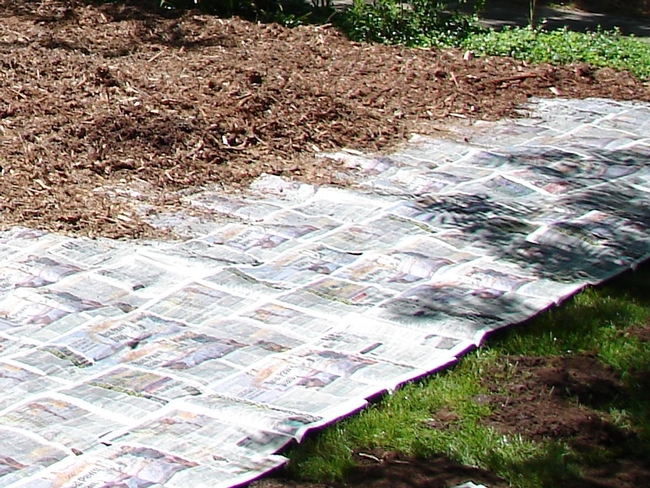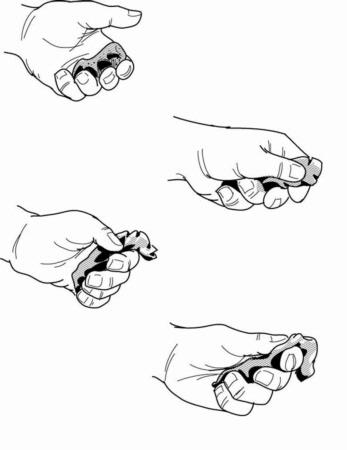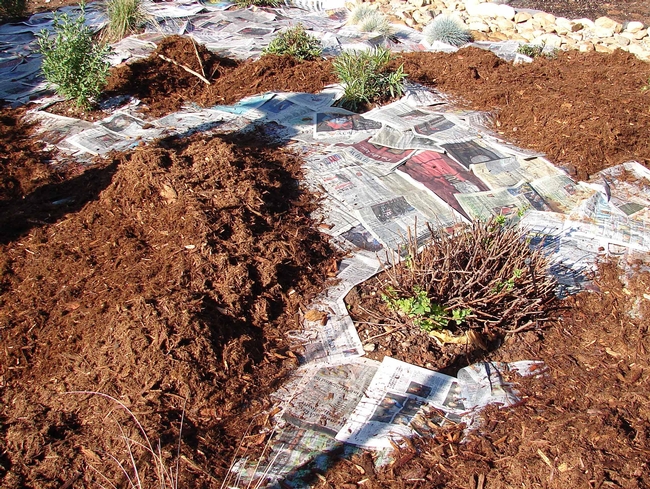Does growing a vegetable garden sound like something you'd like to do, but you don't feel confident or equipped to do it? Well, here's the deal: find some dirt, and then add plants. It's that simple. With the advent of the coronavirus pandemic, food insecurity, and the general chaos that so many of us are living with these days, lots of people who weren't gardening before are now thinking about it.

Soil is comprised of four things: minerals (from decomposed rock), air, water, and organic matter. The organic material originates from living organisms (or stuff that was once alive). A single teaspoon of soil may contain as many as 4 billion bacteria; 1 million fungi; 20 million actinomycetes; and 300,000 algae. All of these beneficial microorganisms, along with friendly earthworms, work to produce healthy soil. Even though soil is packed with minerals, organic matter and microscopic critters, it still has pores which hold water and air. It's not surprising to find water there, but why air? Plant roots and most microorganisms “breathe,” and the soil takes in oxygen and releases carbon dioxide. The ideal soil composition for growing plants is 45% minerals, 5% organic materials, 25% water and 25% air.
Now consider the soil you are eying for your potential vegetable garden. About half of most soil consists of minerals. Soil minerals are categorized by size: sand particles are the biggest, silt is medium-sized, and clay particles are the smallest. Soil texture accordingly falls into those three general categories: coarse (sand), medium (silt), and fine (clay). The best soil for home gardens is a medium-textured “loam,” which means it has a relative balance of sand, silt and clay with 5 to 10% organic matter.

As you hold your own soil in your hands, you may already be able to tell whether it has a favorable texture. The appearance of your dirt when it's dry can offer clues, too. Does it shrink and crack into blocky structures? That would be clay. When you add water, does the water puddle easily (clay) or drain quickly (sand)? Even if you're not blessed with a perfect, loamy soil, that's ok. A sticky clay soil may be harder to work with, but clay plays a crucial role in soil fertility, so clay soil is often rich and holds moisture well. A sandy soil is less able to retain moisture and nutrients, but it's easier to work with. Fortunately, there are steps you can take to improve your soil so that it moves away from the extremes and closer to a balanced loam.
Your objective is to give your soil some tender loving care, and your soil will return the favor by giving you healthier plants and better produce. Your soil's texture and mineral composition is what it is, but one element that can be altered is its percentage of organic material. No matter what kind of soil you have, adding organic matter will make it better. Organic materials include grass clippings, fallen leaves, straw, wood chips, bark, hulls, plant clippings (chopped small), and everyone's favorite -- manure. Now, here's an important point: it takes time for the organic materials to enrich the soil by breaking down and releasing nutrients that become usable by plants. So, what's the best and quickest way to get those things into your soil? Compost. Compost consists of organic matter that is already decomposing; as it mixes into the soil it continues to decompose slowly, releasing nutrients to plants and improving soil texture. Compost costs money, but you can also make your own in as little as two to three weeks at little or no cost. (For instructions on DIY compost, see “Compost in a Hurry.”
Maybe you're thinking, why can't I just throw on my leaves or grass clippings and dig them in? You can do that, but unfortunately, that reduces nitrogen (the nutrient plants need most) for a while because the soil microorganisms compete with your plants for nitrogen as the microbes decompose those grass clippings and leaves. You would still need to add some nitrogen fertilizer. The next best thing to do with your organic material (if you're not using a compost bin) is to turn it into mulch.

Remember that front lawn you're thinking you could convert into a vegetable garden? Sheet mulching is one way you can get rid of the grass, so you can eventually get down to planting vegetables. Cover it, mulch it, forget about it. If you want to learn more about lawn removal, including specifics for sheet mulching see the Real Dirt article on Lawn Removal: Do it Right.
Healthy soil produces healthy plants, and mulching and composting are two ways to turn your dirt into the rich soil that gardeners dream about. Even better, they require no chemicals, and you won't have to spend any money if you're resourceful. In times like these, it's good to know you can get started gardening without emptying your wallet. It's simple. Find some dirt and make it better!
Source: Information on soil composition is from Ben Faber et al. “Soil and Fertilizer Management.” California Master Gardener Handbook, University of California Division of Agriculture and Natural Resources, 2015, pp. 37–81.
The UC Master Gardeners of Butte County are part of the University of California Cooperative Extension (UCCE) system. To learn more about us and our upcoming events, and for help with gardening in our area, visit our website. If you have a gardening question or problem, email the Hotline at mgbutte@ucanr.edu (preferred) or call (530) 538-7201.